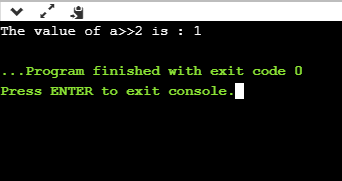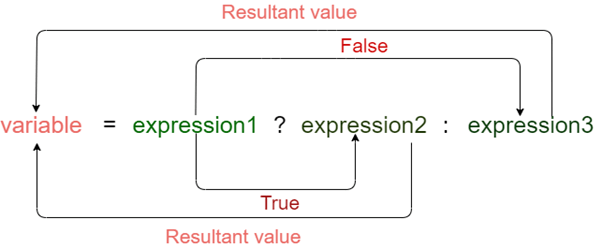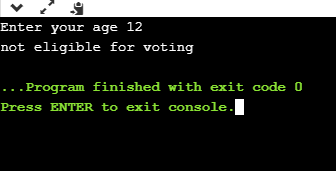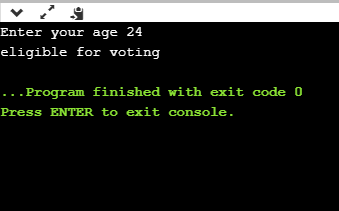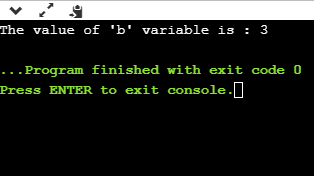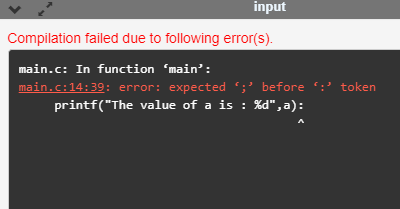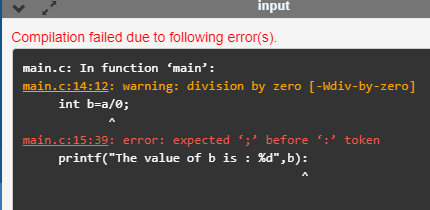Bitwise Operator in C
The bitwise operators are the operators used to perform the operations on the data at the bit-level. When we perform the bitwise operations, then it is also known as bit-level programming. It consists of two digits, either 0 or 1. It is mainly used in numerical computations to make the calculations faster.
We have different types of bitwise operators in the C programming language. The following is the list of the bitwise operators:
| Operator | Meaning of operator |
|---|---|
| & | Bitwise AND operator |
| | | Bitwise OR operator |
| ^ | Bitwise exclusive OR operator |
| ~ | One's complement operator (unary operator) |
| << | Left shift operator |
| >> | Right shift operator |
Let's look at the truth table of the bitwise operators.
| X | Y | X&Y | X|Y | X^Y |
|---|---|---|---|---|
| 0 | 0 | 0 | 0 | 0 |
| 0 | 1 | 0 | 1 | 1 |
| 1 | 0 | 0 | 1 | 1 |
| 1 | 1 | 1 | 1 | 1 |
Bitwise AND operator
Bitwise AND operator is denoted by the single ampersand sign (&). Two integer operands are written on both sides of the (&) operator. If the corresponding bits of both the operands are 1, then the output of the bitwise AND operation is 1; otherwise, the output would be 0.
For example,
As we can observe from the above result that bits of both the variables are compared one by one. If the bit of both the variables is 1 then the output would be 1, otherwise 0.
Let's understand the bitwise AND operator through the program.
In the above code, we have created two variables, i.e., 'a' and 'b'. The values of 'a' and 'b' are 6 and 14 respectively. The binary value of 'a' and 'b' are 0110 and 1110, respectively. When we apply the AND operator between these two variables,
a AND b = 0110 && 1110 = 0110
Output
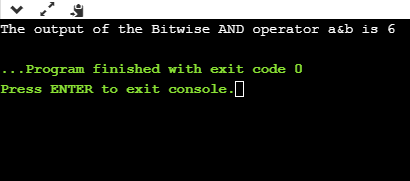
Bitwise OR operator
The bitwise OR operator is represented by a single vertical sign (|). Two integer operands are written on both sides of the (|) symbol. If the bit value of any of the operand is 1, then the output would be 1, otherwise 0.
For example,
As we can observe from the above result that the bits of both the operands are compared one by one; if the value of either bit is 1, then the output would be 1 otherwise 0.
Let's understand the bitwise OR operator through a program.
Output
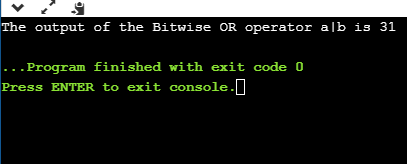
Bitwise exclusive OR operator
Bitwise exclusive OR operator is denoted by (^) symbol. Two operands are written on both sides of the exclusive OR operator. If the corresponding bit of any of the operand is 1 then the output would be 1, otherwise 0.
For example,
As we can observe from the above result that the bits of both the operands are compared one by one; if the corresponding bit value of any of the operand is 1, then the output would be 1 otherwise 0.
Let's understand the bitwise exclusive OR operator through a program.
Output
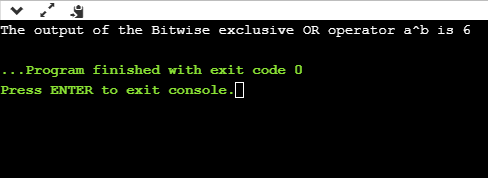
Bitwise complement operator
The bitwise complement operator is also known as one's complement operator. It is represented by the symbol tilde (~). It takes only one operand or variable and performs complement operation on an operand. When we apply the complement operation on any bits, then 0 becomes 1 and 1 becomes 0.
For example,
As we can observe from the above result that if the bit is 1, then it gets changed to 0 else 1.
Let's understand the complement operator through a program.
Output
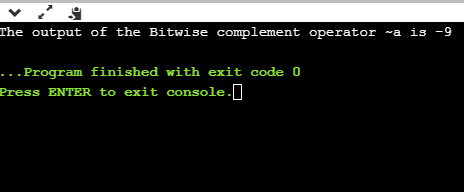
Bitwise shift operators
Two types of bitwise shift operators exist in C programming. The bitwise shift operators will shift the bits either on the left-side or right-side. Therefore, we can say that the bitwise shift operator is divided into two categories:
- Left-shift operator
- Right-shift operator
Left-shift operator
It is an operator that shifts the number of bits to the left-side.
Syntax of the left-shift operator is given below:
Where,
Operand is an integer expression on which we apply the left-shift operation.
n is the number of bits to be shifted.
In the case of Left-shift operator, 'n' bits will be shifted on the left-side. The 'n' bits on the left side will be popped out, and 'n' bits on the right-side are filled with 0.
For example,
Let's understand through a program.
Output
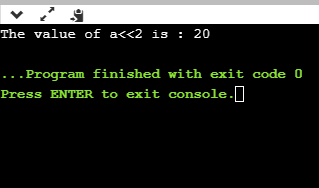
Right-shift operator
It is an operator that shifts the number of bits to the right side.
Syntax of the right-shift operator is given below:
Where,
Operand is an integer expression on which we apply the right-shift operation.
N is the number of bits to be shifted.
In the case of the right-shift operator, 'n' bits will be shifted on the right-side. The 'n' bits on the right-side will be popped out, and 'n' bits on the left-side are filled with 0.
For example,
Let's understand through a program.
Output
